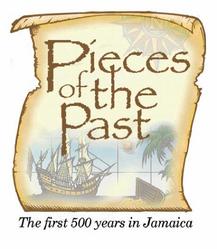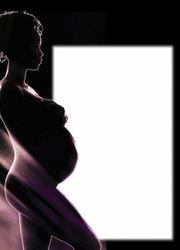
Dr. Rebecca Tortello, Contributor
Around the world and throughout history, the birth of a child has been attended by certain rituals. Today, with most children born in hospitals and prenatal and post-partum activities conforming to western medical guidelines, many birth rituals have disappeared. Their replacements include the use of incubators, catheters and the calculation of Apgar scores. An Apgar score is defined as a 'practical method of evaluating the physical condition of a newborn infant shortly after delivery.' The score itself is determined by scoring the heart rate, respiratory effort, muscle tone, skin colour, and response to a catheter in the nostril. Each of these objective signs can receive 0, 1, or 2 points. A perfect Apgar score of 10 means an infant is in the best possible condition. An infant with an Apgar score of 0-3 needs immediate resuscitation. The Apgar score is generally done 60 seconds after the birth of the infant, and then repeated five minutes later.
Not so long ago, many Jamaican children were born at home and subject to a number of different actions, none of which included scores of any kind. Some of them were similar, however, to those found in other cultures. In Jamaica birth rituals were overseen by nanas or midwives, and varied from place to place, depending on race and class. All, however, reflected a deep sense of connection to, and respect for, the spirit world. Today, retentions are strongest in rural areas.
Preparations for Labour and Delivery

To prepare for birth, the room had to have an open bible on display. The nana would anoint the mother's belly with castor oil which would later be given to both mother and child. This is certainly more pleasant than having the mother drink a glass of water in which her mother-in-law's toe had been dipped, as is the custom in Bihar, India, or having her drink beer in which a purple onion has been boiled, as in Guatemala.
Following the birth, Jamaican nanas dressed the child's navel with nutmeg. The nana also blew smoke into the child's eyes, often from an old clay pipe which these women traditionally smoked. (In many Native American and Amerindian cultures tobacco is regarded as food for the good spirits). The nana then washed her own face with rum and sometimes she herself took a stiff drink to give her 'eyesight,' since the witnessing of each birth was said to affect her sight.
Post-Partum
Following delivery, the mother and child were often isolated for eight days, during, which time the nana took control of the house. It was considered very important to protect mother and child from spiritual harm and any physical dangers that came with childbirth. A special broom was used to sweep out the room and the sweepings were kept,perhaps to prevent others from getting hold of them. The child was marked with blue, and the scissors or knife used to cut the umbilical cord was watched carefully. Some sort of charm or 'guzu' (often a strong-smelling substance) was used to protect the child. The child was also washed in cold water that contained rum and a silver coin given by the father. The water and coin were later buried in the yard along with the afterbirth. The nana counted the knots on the umbilical cord to determine how many children the mother was destined to have.
On the tenth day, the mother and child were taken outside to receive greetings as well as presents from family members and other visitors. The child was also named on that day. This practice is believed to have come from the West African belief that until day eight, the child's fate is uncertain and its personality/soul is not fully formed. In addition, there was the possibility that the child could be a visitor from the spiritual world, and if that was the case, then he/she must not be welcomed. If the child died during this period, for example, it was believed that an evil spirit had arrived.
These rituals are similar to those practised by the earliest Jamaicans, the Tainos. Although no data exist for Jamaica during this period, in Guyana where descendants of Tainos still exist, it is interesting to note that the child is not regarded as an individual separate from his/her mother for the first five to 12 days. Both are considered polluted or ritually unclean and kept indoors to prevent contamination. The naming ceremony takes place 10-12 days following birth. If the child dies before then, it was considered not to have gained a social personality.
The Birth Tree
The burial of parts of the birthing matter is a common post-partum ritual in many cultures. In Cambodia, for example, what is known as 'the globe of the origin of the soul,' must be buried in the right location in order to protect the baby, and the spot may be covered with a spiky plant to keep evil spirits and dogs from interfering. This prevents potential long-term effects on the mother's mental health. In Turkey, if parents wish their child(ren) to be devout, they may bury the placenta in the courtyard of a mosque. In the Ukraine, tradition holds that a midwife would divine from the newborn placenta how many more children the mother would bear. The placenta was later buried in a location where it would not be stepped over. If it was buried under the doorway, the belief was that the mother would become infertile. In Transylvania, if a couple desired not to have any more children, they would burn their baby's placenta and mix it with ashes, and to render himself infertile, the husband would then drink this potent mixture.
In Jamaica the placenta is buried, it was more a matter of necessity rather than ritual. It was the burial of the umbilical cord or navel string that attracted ritualistic behaviour. This cord was not only buried in a special location but a tree was planted on that spot. Coconut trees and breadfruit trees were the most popular types. That tree became known as a birth tree. This is where the term 'where you navel string is buried', which symbolises a spiritual attachment to a place, comes from. The tree became the child's property and that of his/her future progeny. This is said to have helped to reinforce the concept of 'family land' that is passed down from generation to generation.
Noted American dancer and anthropologist, Katherine Dunham, described this practice which she witnessed in Accompong while doing ethnographic research in the 1940s. Dunham noted that the tree was provided by parents, godparents or other relatives and friends, and was a symbol of great pride. Martha Beckwith, another anthropologist who conducted research in Jamaica, believed that the tree was also a pedagogical tool, teaching the child to take responsibility in life. According to her, it was used to show the child that it is the beginning of his life and he must takecare of it.
Ashes to Ashes
Birth and death are very similar, in that they are the doorways into and out of life on this earth. One is tinged with excitement, the other with sadness. As the boundaries of our existence, both, however, are fraught with danger, fear and concern - all of which as you can see, are addressed by their attending rituals.
Next month's piece will look more closely at the history of Jamaican death rituals.
Sources: Senior, O. (2003). The Encyclopedia of the Jamaican Heritage, pp. 60-61, 349 Kingston: Twin Guinep Publishers.
http://www.medterms.com/script/main/art.asp?articlekey=2303, http://www.mothering.com/articles/pregnancy_birth/birth_preparation/amazing_placenta.
(http://www.medterms.com/script/main/art.asp?articlekey=2303).
(http://www.midwiferytoday.com/enews/enews0241.asp).
(http://www.mothering.com/articles/pregnancy_birth/birth_preparation/amazing_placenta).
Collect the 'Pieces of the Past' book
We know you love the series. Own a copy of this amazing collection of the first articles in Pieces of the Past: A Stroll Down Jamaica's Memory Lane by Rebecca Tortello - now available in Sangster's Book Stores islandwide and online at www.sangstersbooks.com.

